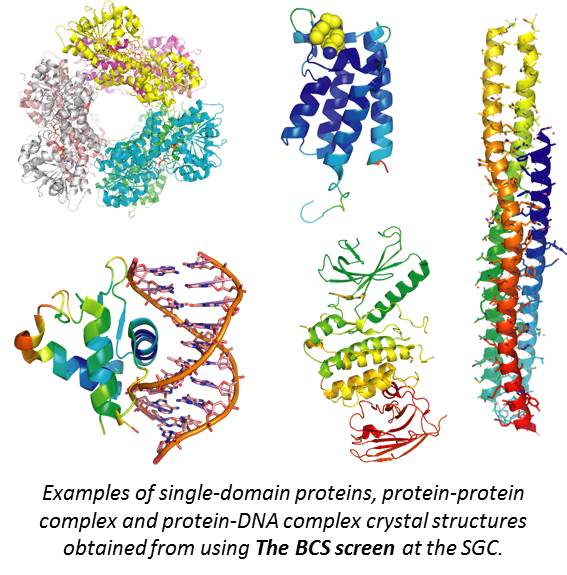The BCS Screen
The BCS (Basic Chemical Space) Screen developed at the Structural Genomic Consortium (SGC), Oxford has a novel approach to screening. PEGs are grouped by molecular weight and mixed to create four PEG Smears* (available to purchase separately). The Smears cover a broader range of chemical space while reducing the number of PEG variables. The benefit of using PEG smears is that it reduces the number of PEG variables while maintaining a large coverage of PEG space.
The bottom line is that in tests at the SGC with 191 human proteins, the BCS Screen had a 42% hit rate with only 96 conditions. Many of these proteins had failed to crystallize in other screens.
Learn More About This ProductProduct Information
Crystal developed by Dr. Helen Gingell from Peak Proteins using the BCS Screen HT-96.
How it Works
The first 24 conditions in The BCS Screen form a grid screen of the four PEG Smears against pH (range 4.5-9.5). The remaining 72 conditions consist of a sparse matrix screen in which the precipitant is always one of the PEG Smears but with a variety of additives and buffers. The additives include some of the more unusual crystal-promoting agents such as rubidium chloride (also useful for phasing) and ammonium nitrate. More common additives including sodium bromide (useful for phasing) and glycerol are also used in the screen.

